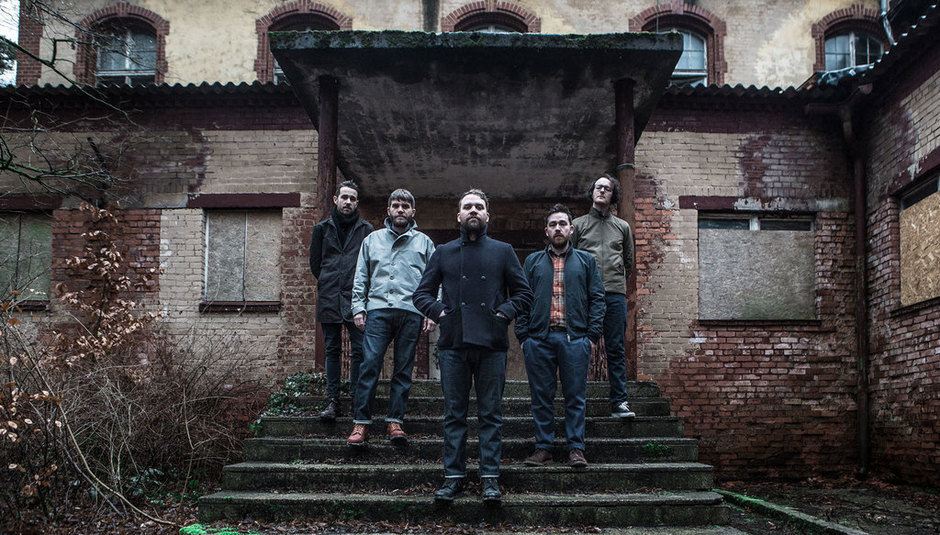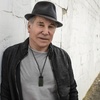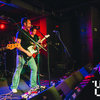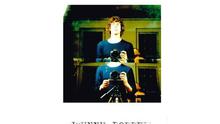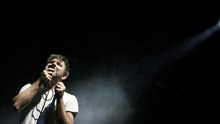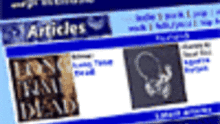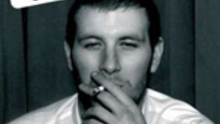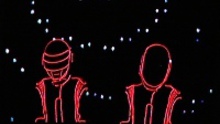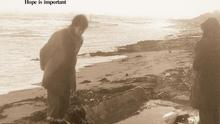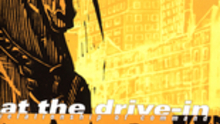“I’d lost sight of why we were still doing it.”
The last time I spoke to Scott Hutchison, in the summer of 2014, was to talk about a low-key solo record he’d made under the name Owl John. By way of comparison to Frightened Rabbit, it was an eccentric listen, with stormy, experimental instrumentals written on Mull providing the platform for lyrics preoccupied with his then-recent move from Edinburgh to Los Angeles. He barely toured it, and outwith the most hardened of Rabbit fans, it seemed to fly under the radar. Hutchison, though, is as candid in conversation as he is in his songwriting and duly, the pullquote read: “this record saved Frightened Rabbit.”
Nearly two years later, the passage of time hasn’t diluted that sentiment. In late 2013, Hutchison and his bandmates seemed to have the world at their feet; they were selling out some of the biggest rooms they’d ever played on either side of the Atlantic, on the back of their rapturously-received major label debut. Behind the scenes, though, things were falling apart, with the grind of the road taking a hefty toll and the dull weight of disillusionment nullifying the positives. “We toured the arse off Pedestrian Verse,” says Hutchison, “and I think everyone could sense the enthusiasm waning.”
Improbable as it might have seemed to the outside world at that point, there was a very real danger that, perversely, the success of that fourth album would ultimately make it the band’s last, too. “We needed to step away from it for a few months. I was getting this sense that I’d spent my entire adult life just doing this one thing with hardly any breaks, and I was so burnt out by the time we finished touring that I was wondering whether I wanted to carry on with it. Owl John was a real palate-cleanser, because it sort of reignited that excitement to go back and work with Frightened Rabbit, which was something we all felt we’d been sapped of.”
That record laid some of the groundwork for Painting of a Panic Attack, the band’s fifth LP, but even a cursory glance at the details behind the making of the album offers compelling evidence that it wasn’t the only factor in helping the Scots to rediscover their joie de vivre. Aaron Dessner, of the band’s heroes and one-time tourmates The National, took on production duties. Guitarist Gordon Skene has been replaced by Simon Liddell, with the switch tactfully described by Hutchison as “a better fit, personality-wise”. The group seem to have afforded themselves the luxury of time more readily, too; this is the longest gap there’s ever been between Frightened Rabbit records, even if their post-Verse break only lasted a matter of months.
“I think we all felt that was long enough,” says Hutchison of the decision to reconvene in August 2014, the same month he wrapped his brief run of Owl John shows. “It was never a hiatus, or anything that formal. It was just that natural thing of, “let’s not do anything until sometime next year,” and beyond that, it was sort of unspoken that we’d take time to work on other things, whether it was Andy (Monaghan, guitar) doing more production work for other Scottish bands or my brother, Grant (drums) cycling around the UK for charity. We achieved exactly what we wanted to, in that we reached the point where we were all itching to get back to the band. We’d added Simon to the lineup, as well; he was brand new to the process, and he had this excitement to get into the studio that I think rubbed off pretty quickly on the rest of us.”
There was, however, a geographical spanner in the works. In early 2014, shortly after starting work on the Owl John record, Hutchison moved to Los Angeles to be with his girlfriend; the rest of Frightened Rabbit remained in Glasgow. Impromptu group writing sessions were no longer an option, with a long-distance working relationship now a necessary evil. Plus, Hutchison was left to reflect on how the gravity of the change in his surroundings would inform the new songs. “I hadn’t intended for that to be a factor,” he recalls, “and I don’t think the move ended up having the most predictable impact. A lot of people were making hilarious jokes, saying I was going to end up writing sunny, west coast jangle pop, which is obviously bullshit! And kind of impossible for somebody like me, anyway. What did happen is that I never really managed to immerse myself in the culture in Los Angeles - if culture’s even the right word, because there’s a distinct lack of it in some places. I’d have loved to have been happier there, but I wasn’t. I didn’t fit in. That’s why there’s that feeling of alienation running through the album.”
In practical terms, too, it meant that Painting of a Panic Attack ended up being written in fits and starts - Hutchison describes it as “such a mongrel of a record.” The kernels of a handful of tracks came out of the very first session together - ‘I Wish I Was Sober’ and ‘Lump Street’ among them - before Hutchison returned to California and attempted to work from there, with ideas exchanged by email between LA and Scotland, where the rest of the group continued to write without him.
When Pedestrian Verse was released, three years ago, Hutchison talked about the misstep he felt he’d made on their previous full-length, The Winter of Mixed Drinks; after realising that he suddenly had an audience and a platform, following the breakout success of The Midnight Organ Fight in 2008, he became a little bit more reticent in his approach to writing, tempering his predisposition for the intensely personal. He reversed that change on Verse - after all, it was the intimate details that the fans had connected with in the first place - but when he began to gravitate towards it again in the early stages of writing this album, the transatlantic nature of the process helped his bandmates steer him back on course.
“On the last three records, I’ve always started out by almost trying to do some kind of wanky concept thing,” he laughs. “You start to think that there’s a self-indulgence in constantly writing about your own life - it really strikes you, and you try to make a conscious move away from it. When I sent those early ideas to the other guys, they were a bit more forthright than they might normally be in telling me they didn’t think it was working. My brother, especially. And I was pissed for a few days, but I realised he was right, and I was glad that he hadn’t had to skirt around it like he might have done if we were working together in person. Email made it easier for him to be, like, “I’m looking at it from the point of view of the listener, and this isn’t what I want to hear. I don’t want you to censor the personal stuff.” And I knew I didn’t need to. I knew there was turmoil to write about, because Los Angeles wasn’t being very giving.”
The Owl John record was being written right around the time that Hutchison moved to LA. It was a point at which he had no shortage of hopes and fears for his new life in the city, but little in the way of an established opinion on the place he was now calling home; ‘Los Angeles Be Kind’, for instance, rang out with the sort of tentative optimism that the title suggests. “It didn’t turn out to be the kind of sunshine and happiness affair that I’d assumed it might be. I found it quite lonely. It’s such a sprawl, and whilst I do have friends there, it was never the sort of community I’d become accustomed to in Glasgow and Edinburgh, where you can pretty much wander down to the pub on a whim and bump into a few of your pals at any given moment. I missed that neighbourhood feeling, and my girlfriend was in a similar position; she’s not from L.A., either.”
“That ended up feeding this unhealthy situation where we kind of created an island for each other, and removed ourselves a little bit too much. Suddenly, we were this one unit, spending all of our time together. That’s where ‘Get Out’ came from - that super intense addiction, almost, to another person. I don’t think LA’s a terrible place, but you have to have really good reason for being there, and we didn’t any more. We became so isolated, and it was doing us damage.”
They’ve since moved to Hudson in upstate New York, and it was in the Empire State that Painting of a Panic Attack was recorded, primarily because of Dessner’s involvement behind the desk. “We’d crossed paths before, but never in as meaningful a way as this,” explains Hutchison. “We did once do a couple of weeks of shows with The National, but it wasn’t really a party-on-the-bus situation; they’re fairly reserved as people, and so are we.” It was only once The National had wound down touring for Trouble Will Find Me - right around the time that Hutchison was struggling to find his footing for his own band’s new record - that Dessner joined the fold. “Somebody at our label met Aaron and suggested that we get in touch, so I went out to his place in Ditmas Park and played him some demos. I was only supposed to go there to work on a couple of things with him, but it sort of became clear that he’d seen a turning point for us in the songs, and that he was excited about them. After that, it would’ve been counter-productive to think about anybody else as producer; Aaron was the only guy outside of the band who was already really invested in our ideas for this new record. Plus, because we’re all such big fans of The National, it felt like there was already some kind of trust in place.”
As much as it’s clear that Dessner was hands-on in his production of the record - “there aren’t many songs on which he doesn’t play at least one instrument” - the shift in circumstance and sound that’s taken place with this album was always going to suit him better than, say, the eyes-to-the-sky rush of Pedestrian Verse. Painting of a Panic Attack is a totally different beast; sparser and more clinical, scored through with a sense of detachment and paranoia largely absent from previous Frightened Rabbit releases. “I felt we’d reached a conclusion of sorts with Pedestrian Verse,” says Hutchison, “after years of working towards a certain sound, and succeeding in some places and failing in others. It leaves you wondering where to go next. We started to make moves in a little bit more of an electronic direction, partly because I was working alone a lot and getting to grips with music software. We wanted it to sound a little barer, but we’re really bad at sticking to whichever rules we set ourselves and whenever we’ve said previously that we wanted to try something sparse, a few of us - me, especially - end up too tempted to lean towards anthemic, epic territory. Aaron really kept a lid on that. He lent this swooning, longing beauty to the album that we’d been lacking in the past, because we’d always been going for bluster instead.”
Recording took four weeks, which the band split down the middle; two upstate at Dreamland Studios, near Woodstock, and another two in Brooklyn at Dessner’s home studio. “It was Aaron’s idea to do it in two different rooms. I can understand the appeal; they held such opposite feelings. Upstate, we were in this big, beautiful old church, which was amazing from an acoustic point of view. I mean, you could’ve fucking farted in there and it would’ve sounded incredible, but on the other hand, the studio in Brooklyn is basically a garage, so that’s at the other end of the spectrum. It’s totally unforgiving - if something sounds like shite in there, it’s very, very obvious. It was a lot more claustrophobic in there, but I really enjoyed that - especially knowing that’s where the bulk of the last three National records were made, which is kind of unbelievable in itself.”
There’s always been that visceral, unflinching quality to Hutchison’s writing, and it’s never been an affectation; honesty is his currency, both in his lyrics and in interviews. It’s for that reason that it felt so painful to hear him speak of Frightened Rabbit’s future in such uncertain terms post-Pedestrian Verse and, similarly, is why it’s so heartening that he’s so forthcoming on the band’s next moves this time around. There’s perhaps his most direct stabs yet at political issues on Painting of a Panic Attack; the working class empathy of ‘Lump Street’, for instance, or the shrewd utilisation of a love song as a way to excoriate the privileged on ‘Die Like a Rich Boy’. “I’d love to write a whole record like that, but I don’t think it could be in Frightened Rabbit. It takes everyone in the band to be into it for a song to survive, and when we started this album, I had to think about what the point in another Frightened Rabbit album was. The answer is that there’s an emotional connection with the listener, and it comes from the fact that I write from a deeply personal standpoint. I’m not sure I can afford to do without that.”
Before they can spend too long thinking about what they might get up to next in the studio, though, Frightened Rabbit have past mistakes to learn from - they can’t afford to run themselves into the ground for a second time. “We got new management at the end of last year,” Hutchison explains, “and we were very honest and open about what happened last time, and about the fact that it can’t happen again. We’ve had that in mind from the start. We don’t want to take as long to put the next record out, so we’ve been quite mindful of leaving ourselves enough space and time to lay the foundations in our studio in Glasgow.”
“We’d like to have a few things in our pocket by the start of next year, I think. We’ve always toured a little bit too hard, but last time, it almost killed the band off, and there’s no point in working until you don’t want to do it any more. We want to jump at as many opportunities as we can - it’s just that I don’t want to lose my mind again.”
Painting of a Panic Attack is available now via Atlantic Records

